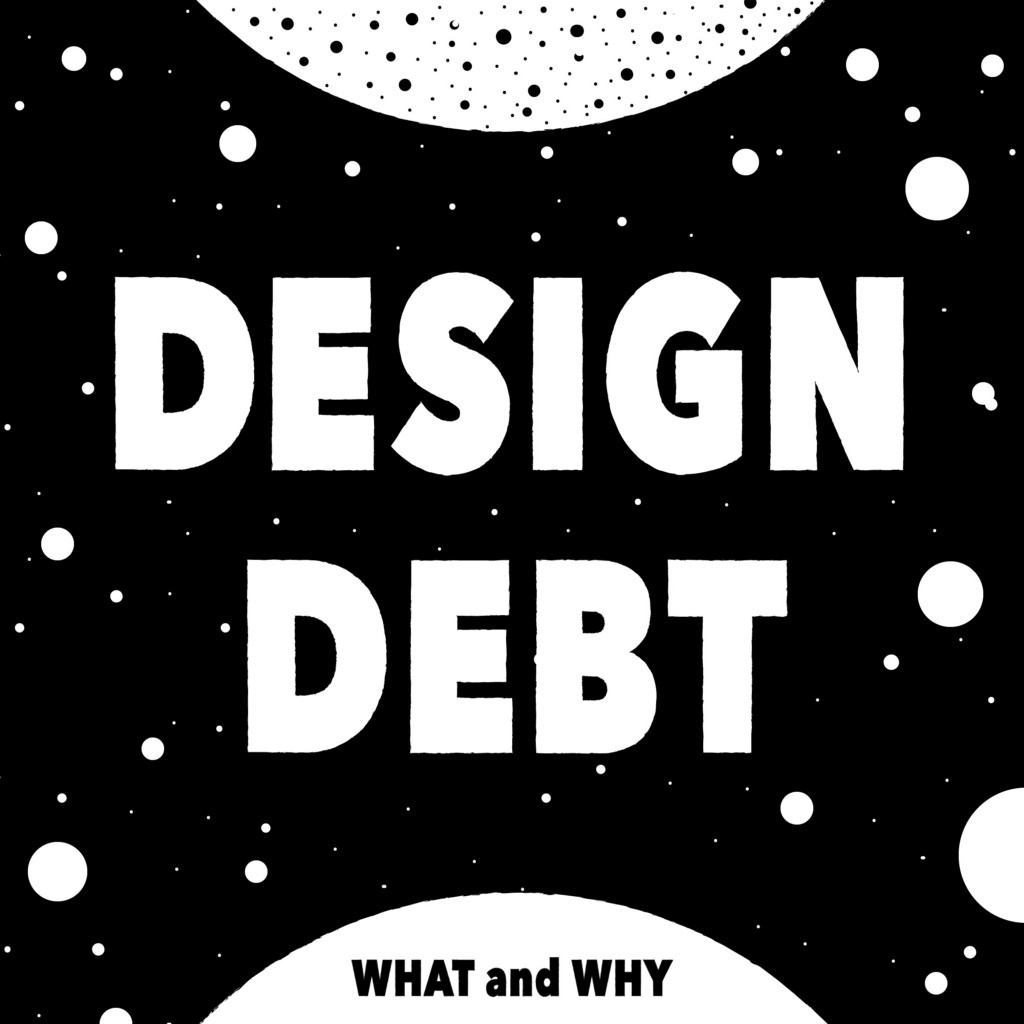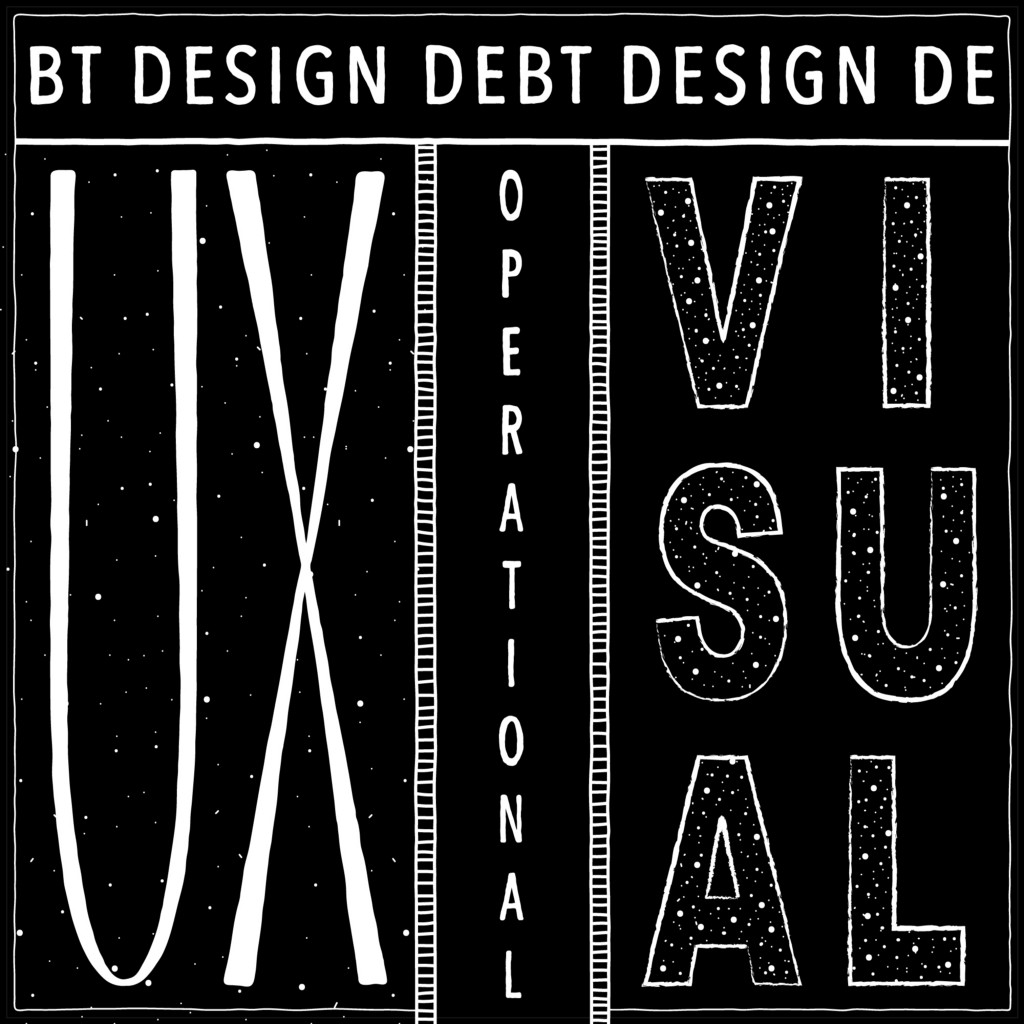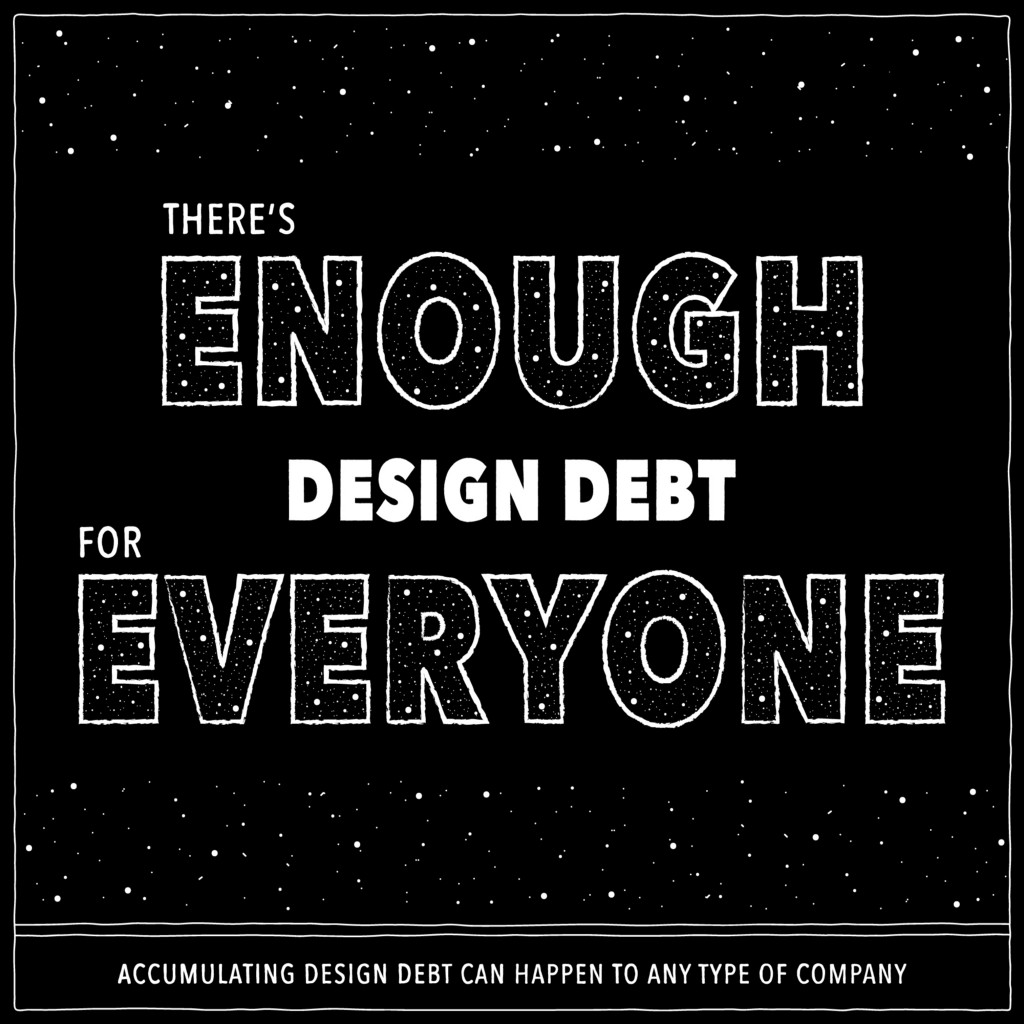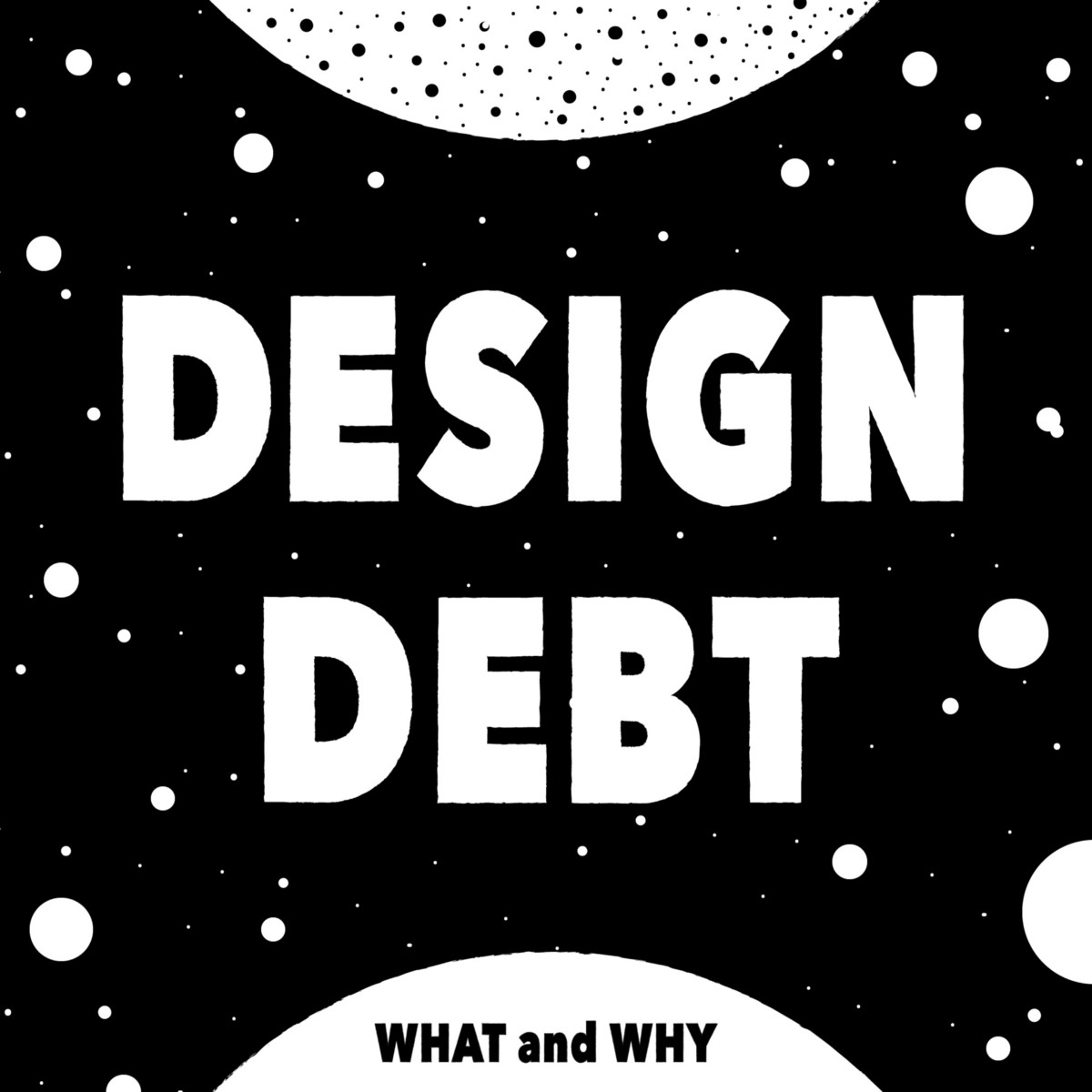The first part of the ‘Design Debt 101’ series.

Monday afternoon. Kick-off meeting. This new project looks very promising, you may have discovered a niche no one knew about. It turns out, you need notifications. “Great! We have a notification system. It shouldn’t be an issue”, you think. How naive…
A quick exchange of sentences. Everyone realizes you already inform [annoy] your user with toast notifications, notifications feed, and bottom overlays. The list doesn’t end here. Occasionally, you even go so as far as showing full-screen popups if the information is ‘really important’. You also send emails…and use Intercom to better ‘connect’ with your users.
Quite a desperate look.
New notifications don’t fit in the current structure. Even if they were, they would get lost in this noise.
You can go in two directions:
- try to fit new notifications in the system you have, play whack-a-mole for the next couple of weeks, and end up with a mediocre solution;
- or… take a step back and rethink the whole system and solve this issue for good… but, delay the new feature delivery by 3 months.
If this scenario plays out every time you try to introduce changes, your product is drowning in design debt.
What is design debt?
Design debt is the sum of all the imperfections of the user experience and design processes that appear over time as a result of innovation, growth, and lack of design refactoring.
Accumulating design debt over time is natural and happens to every product. It’s a side effect of development. The key is to recognize, understand, and manage it properly.
Let’s describe design debt symptoms first:
- Slow growth as introducing any change requires a disproportional amount of work. The user experience is falling behind and it’s hard to gain new customers.
- Reduced adoption and customer satisfaction as new solutions are clunky and the system is less and less coherent. Users are having a hard time learning and using the product.
- Low team velocity as every time a change is introduced, the domino effect of additional work starts.
- Difficulties in accommodating new features as the solutions developed so far were meant for the simpler and smaller product.
- General team dissatisfaction as they put so much effort and see very little impact.
In general, if product managers and designers find themselves playing Jenga and whack-a-mole more often than playing chess, it’s a ‘design debt red alarm’.
Usually, when defining the design debt, people focus on the inconsistencies of the user experience that appear over time. In my opinion, this definition is too narrow and focuses on only one part of the problem. To fully understand the idea of design debt and issues caused by it, we need to be more precise.

There are 3 types of design debt:
- UX design debt
The commonly known one. It is defined by inconsistent experiences throughout the product that negatively impact the learnability and integrity of the flow. This type of design debt is usually the most important and should be tackled first. - Operational design debt
This type of debt slows down the design and development teams’ work. It can be defined as the absence of the underlying structure and processes. Signals to look for:
– lack of design system and corresponding UI components
– outdated design files, not consistent with the implementation
– design files that are hard to work with (no components and styles, flat structure, etc.) that cause designers to build all elements from scratch or spend time on cleaning up the existing files before starting the project
– ‘hard’ design hand-off process*, weak designer-developer workflow
*In contrary to ‘soft’ design hand-off which is based on continuous designer-developer communication when implementing the solution. - Visual design debt
Focused on inconsistent graphical aspects of the interface like shapes, colors, etc. In extreme cases, portions of the system don’t feel like they come from the same product at all, due to a disjointed look and feel. Visual design debt seems trivial at first but, when neglected, all the small details add up and cause bigger issues. They may undermine the product’s credibility by making it look less professional and trustworthy.
It’s important to remember that all types of design debt are interconnected. Usually, all three of them exist in the given product to a certain extend at the same time.
Differentiating between design debt types is particularly useful for prioritization. Assessing the return on investments of paying the debt off becomes more straightforward.
Why are we in [design] debt?
After clarifying what the design debt is and what are its symptoms, it’s natural to ask about design debt’s origins. As previously, the answer is quite complex and varies depends on the company, its culture, and its history.
- Not ‘cleaning up’ after testing new ideas
Quick prototypes and MVPs are great means to discover the right path for the product. By definition, these methods generate solutions that are imperfect and need to be iterated on. Unfortunately, in many cases, the first implementation is not revised properly and stays in its unfinished state for a long time. ‘Cleaning up’ means either improving the original design and properly incorporate it in the product or removing it completely, if the experiment went poorly.
The longer team postpones the ‘cleaning’ , the harder it is to get it done. Customers get used to the current implementation and changing anything can potentially ruin their workflows.
- Tight budgets and timelines
Insufficient resources result in compromising on the quality of work. Cutting the scope of the project may result in simplified or even incomplete flows. In addition, design teams often resign from usability testing and turn a blind eye to visual inconsistencies between mockups and implementation. Cutting corners helps deliver the work on time but does not remain without consequences. - Technical debt
Design debt and technical debt are correlated. Usually, if a company has a lot of technical debt, the design team’s solutions are constantly being rejected by engineering as ‘too complicated to implement given the current infrastructure’. It starts the spiral of compromises and mediocrity followed by generating more and more design debt over time. - Lack of design leadership and creative direction
Design leaders are key to maintaining a sustainable amount of design debt by educating their team and the whole organization. They also have enough power to gather resources and to ensure the quality of work. Creative direction and design leadership are crucial in transition moments like a redesign, rebranding, or acquiring new businesses. In those cases, change management can significantly impact the future of the whole company, both positively and negatively. - The wrong mindset — growing instead of scaling
The key is in scaling, not growing. Business leaders want to add revenue at a rapid rate while adding resources at an incremental rate. Adding more revenue and more resources [costs], at the same rate, is not a desirable strategy. The same rules apply to developing a successful product. If the product advances without investing in scalable solutions, both design and technical debt are generated. This leads to higher maintenance and, in consequence, increased both the costs and revenue. The product ends up growing but not scaling. As an example, let’s take an initially small product the gains bigger customers over time. They bring the unseen before amounts of data; therefore, solutions that worked before, ex. simple lists, infinite scroll, or unrestricted filtering, are not scaling. The team needs to rethink the whole architecture to accommodate new needs. If they choose to simply build on top of the existing system, maintenance costs will increase, and product development will eventually slow down significantly.

How does the size of the organization affect design debt?
Accumulating design debt can happen to any type of company. All organizations will eventually suffer consequences if they are not controlling their design debt.
The main factor that plays a role in managing the design debt is how many strings are attached to every decision.
- Layers of design debt
Older and bigger organizations had more time to accumulate design debt. They also usually have multiple products under one umbrella. Problems are more interconnected and complex. Startups and emerging companies have fewer ‘layers’ of debt and therefore, fewer constraints and dependencies to consider. - Organizational design and decision-making process
Team structure also plays a big role. Smaller organizations usually can proceed faster. There are fewer teams and fewer decision-makers. In bigger organizations, more people need to agree on a strategy of paying off the design debt. This ‘maintenance’ work often competes with more exciting projects. The best organizations solve those issues by wise leadership and establishing clear direction. - Resources
The pool of talent and manpower are playing an important role in managing design debt. Usually, bigger organizations are luckier than small companies, in this category. When reducing design debt becomes a priority, they can make a lot of progress in a fairly short amount of time thanks to their resources. This is not to say that a big company will be always more effective than a smaller organization. It simply means that they start from a privileged position. - Relationships with customers
Established companies usually are expected to provide a high level of stability to their customers. Each move is carefully communicated, expectations are very high. Major changes can become problematic to handle, especially if they alter the existing flows customers rely on. Startups are on the opposite side of the spectrum. They are obligated to evolver, expected to even pivot. For them, the bar for maintaining good relationships with customers is usually way lower.
What’s next?
The next articles from this ‘Design debt 101’ series will explain in more detail:
- Interest on design debt
- Paying off design debt
- Using design debt to your advantage
I’d be happy to hear from you at [email protected]

The ‘what’ and ‘why’ of design debt was originally published in UX Collective on Medium, where people are continuing the conversation by highlighting and responding to this story.
